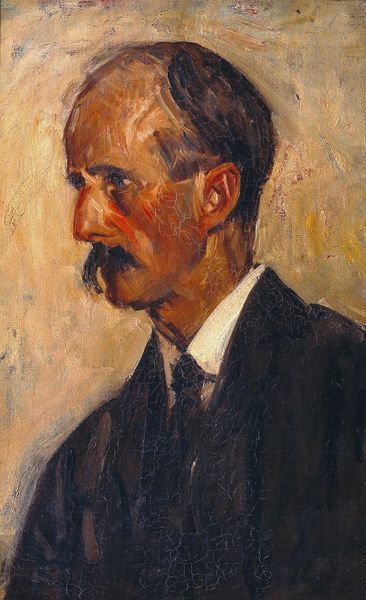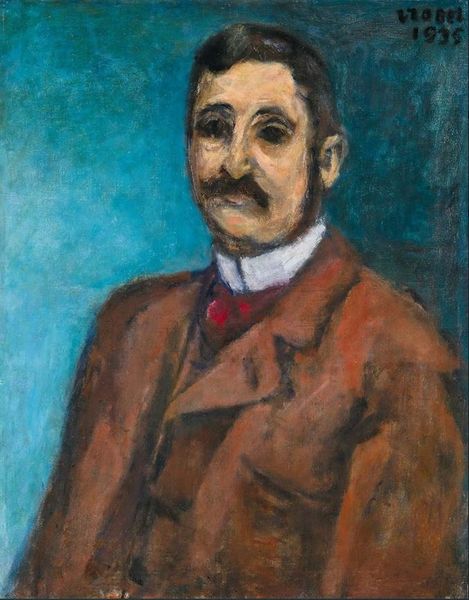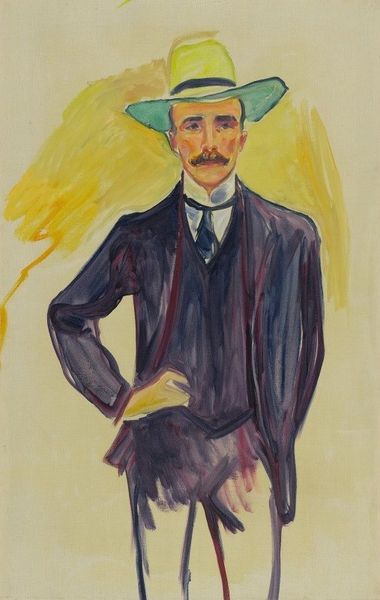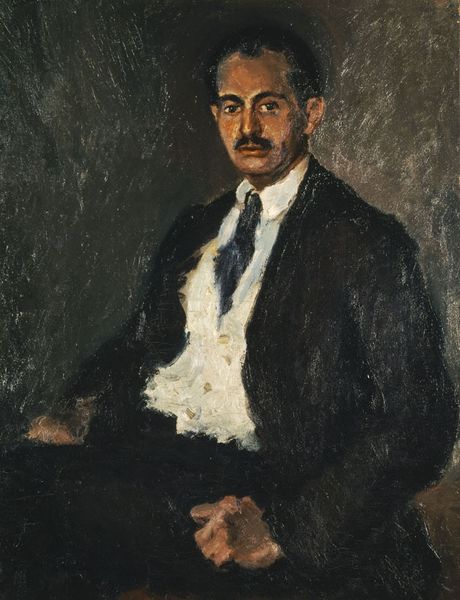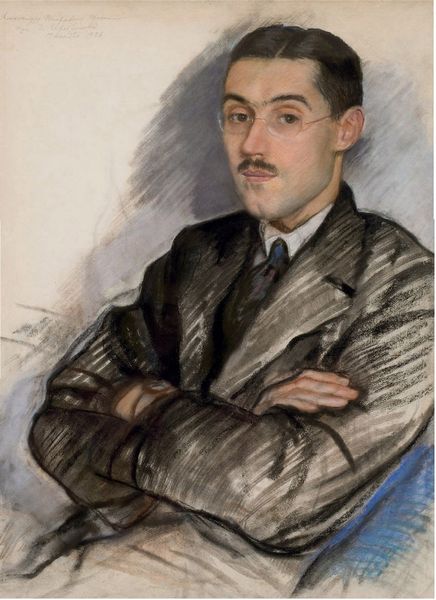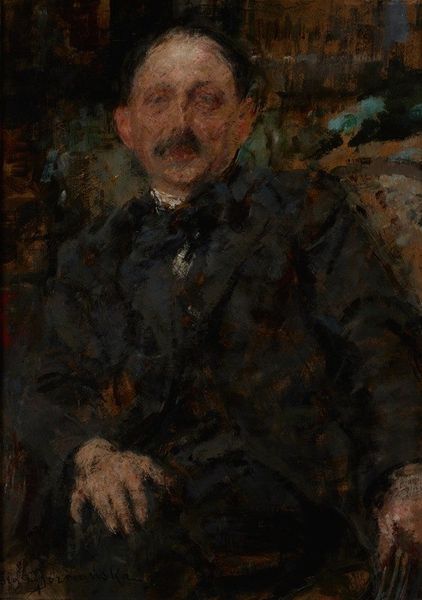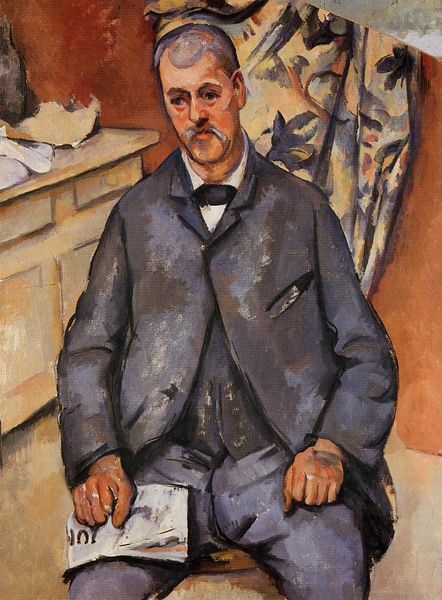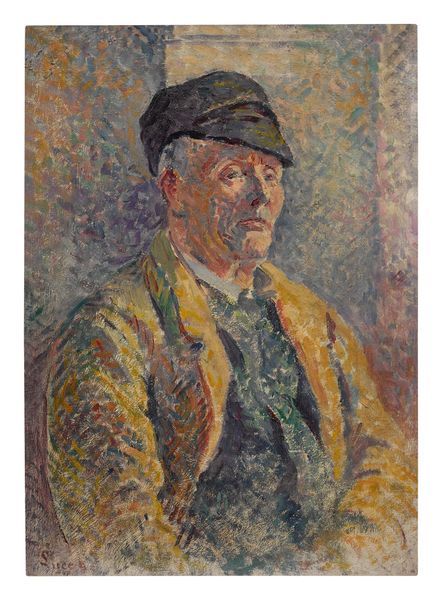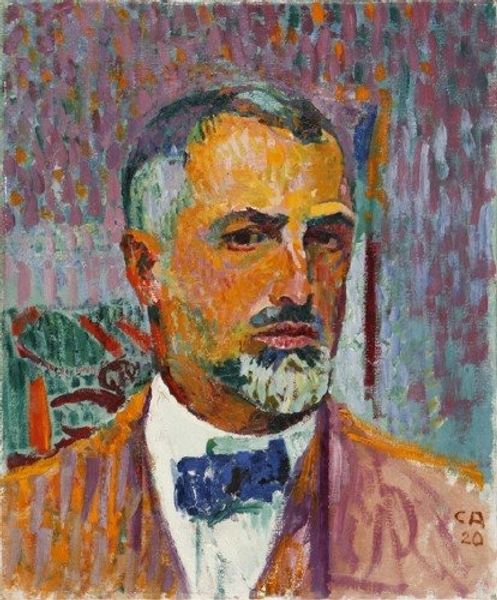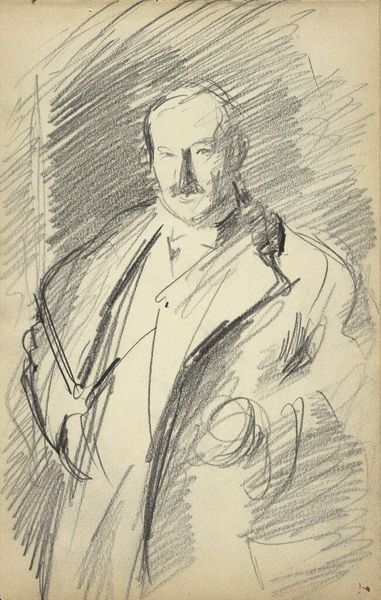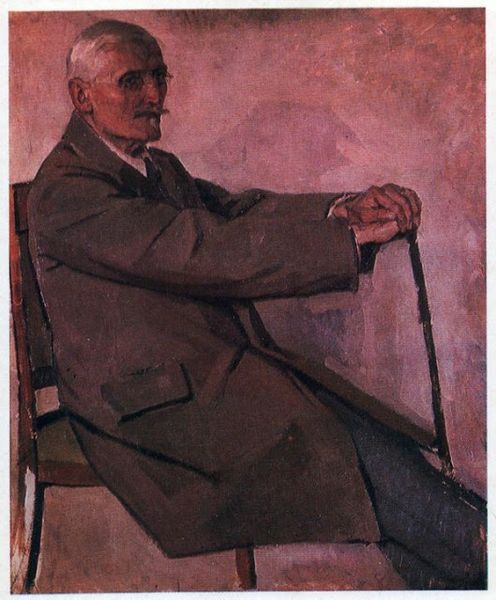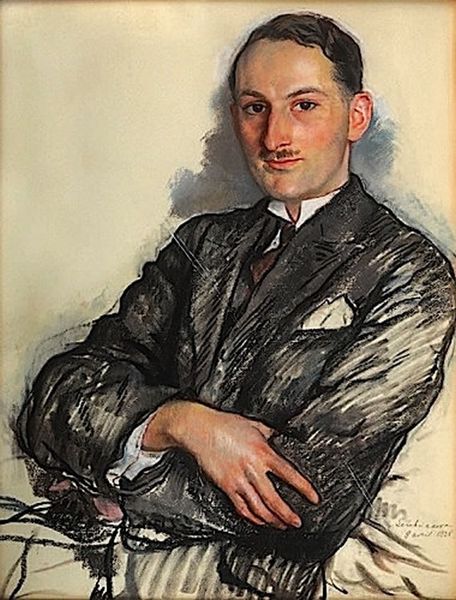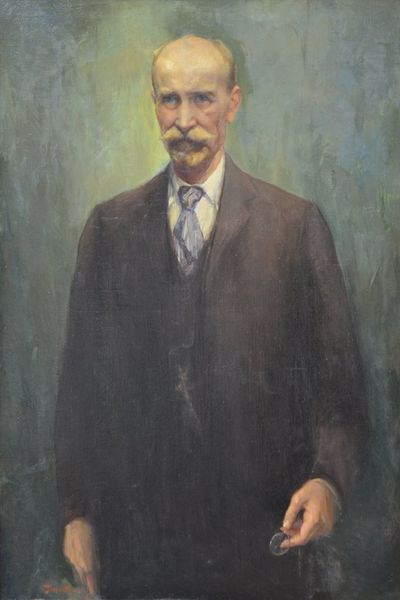
Copyright: Public domain US
Curator: Standing before us is Carlo Carra’s 1909 painting, “Autunno. Ritratto di Emilio Colombo,” a portrait rendered in oil paint. What are your first impressions? Editor: Well, the mosaic-like texture created by the oil paint gives it an ephemeral quality, like the subject is emerging from the very fabric of the autumnal setting, perhaps reflecting his own season of life. Curator: I see your point. The figure, positioned as though amidst an Italian Renaissance landscape, reminds us that portraiture here served as a statement, situating the subject within both a social and art-historical context. It feels as though Carra aimed to lend his sitter an enduring and weighty presence. Editor: And note the deliberate lack of contextual detail that would identify the social standing, as with many aristocratic portraits of the era. This gives a focus on Colombo's face and eyes, which evokes an interesting tension, between self-presentation and more universal symbols of mankind's presence on the stage of the world. What do you make of that ambiguity? Curator: That ambiguity, I think, points to the crossroads where tradition met the avant-garde, during the transition between the end of Post-Impressionism and the rise of movements like Futurism that sought to entirely break with the past. This work sits, perhaps consciously, right on that hinge of history. Editor: I find myself returning to those stylistic nods you mentioned; particularly in the way he’s constructed a sort of dialogue with the painting's setting through a dynamic interplay of symbols; suggesting the man himself is an integral component of nature’s design. This connects him profoundly to that earth. Curator: Yes, and thinking of our place in the landscape, it may show how this is just a blip in the earth's history. Editor: Absolutely, viewing it that way casts the imagery with a broader scope of meaning for contemporary viewing audiences!
Comments
No comments
Be the first to comment and join the conversation on the ultimate creative platform.
